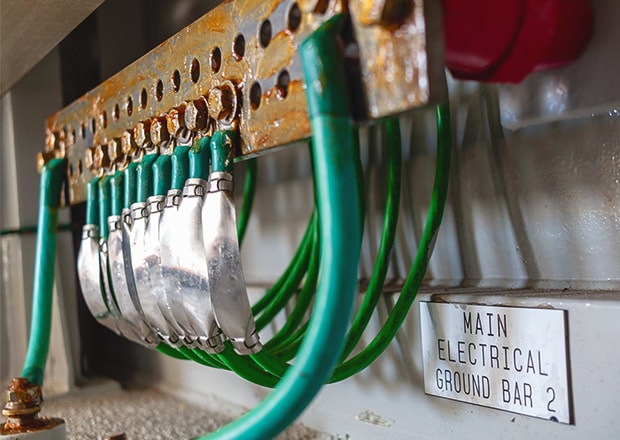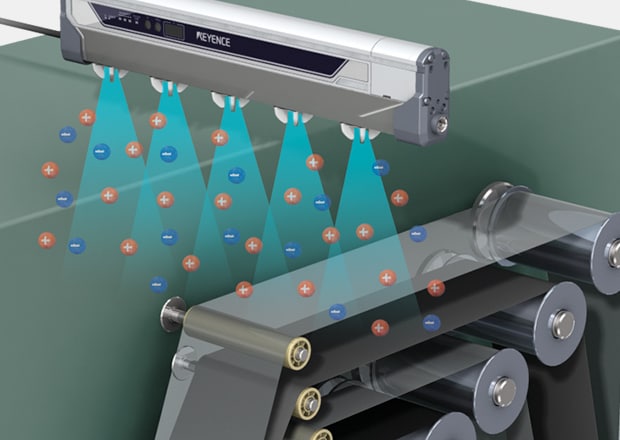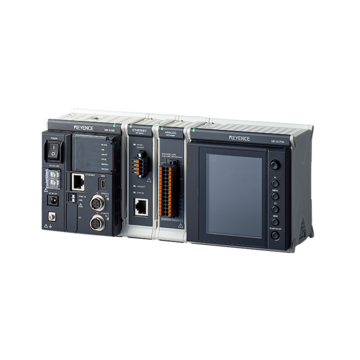Data Acquisition (DAQ)
How Passive Static Eliminators Work
-
Tags:
- Voltage
Passive static elimination neutralizes static electricity on surfaces without an external power source. Unlike active static eliminators, which use electricity to produce ions, passive ones operate through self-energization or induction.
These devices harness static fields naturally generated on material surfaces by friction, pressure, or separation. In industrial settings, static charges can cause issues like damage to electronics, interference with equipment, and safety risks for workers.
Passive static eliminators address static electricity, which occurs due to an imbalance of electric charges on a material’s surface from excess or missing electrons. This imbalance creates forces that attract or repel charges from other materials.
Steps to Use Anti-Static Tinsel Effectively
Anti-static tinsel is an efficient, cost-effective solution for managing static electricity in industries like printing, packaging, electronics, and textiles. Easy to install without professional help, it offers an affordable alternative to advanced static elimination systems. For best results, follow these usage guidelines:

Ground the Tinsel
Proper grounding is essential for anti-static tinsel to work effectively. Securely attach one end to a grounded metal surface, like machinery, to safely discharge static electricity and reduce risks.
Drape the Tinsel Around the Area
Once one end of the tinsel is grounded, position it over areas prone to static buildup, such as machinery, conveyor belts, or surfaces affected by static electricity.
Adjust Distance from Charged Surfaces
The effectiveness of anti-static tinsel relies on proper placement near the charged surface. For optimal neutralization, maintain at least two inches of distance. This ensures the tinsel efficiently absorbs and dissipates static charges, preventing unwanted buildup.
Use Multiple Strands
For larger surfaces or areas with significant static buildup, multiple strands of anti-static tinsel may be needed for better coverage and more efficient static neutralization.
Replace When Needed
Anti-static tinsel can gather dust over time, reducing its effectiveness. Regular inspections, condition monitoring with a static meter and timely replacements are key to maintaining performance.
We’re here to provide you with more details.
Reach out today!

Comparing Passive and Active Static Elimination
Static eliminators come in two types, passive and active, each with its own strengths and drawbacks. Knowing the difference can help businesses pick the perfect solution to keep operations running smoothly.
Passive Static Eliminators
Passive static eliminators, or self-energizing static eliminators, neutralize static charges using their material's intrinsic properties. They operate without an external power source, making them more compact and simpler than active static eliminators.
A common passive static eliminator is the conductive brush or bar, made from materials that retain an electric charge. These devices transfer electrons upon contact to neutralize static buildup.
Passive static elimination reduces maintenance costs by operating without electricity or additional components like fans or power supplies. But while they’re low-maintenance, their performance can drop in certain environments, making them less ideal for specific materials or applications.
Active Static Eliminators
Active static eliminators are powered by an external source to generate ions or electric fields, effectively neutralizing static charges. They’re more complex and larger, but the trade-off is worth it with its adjustable settings and advanced features.

A common active static eliminator is the fan type ionizer, which uses a high-voltage electrode to produce ions that neutralize static charges. Another option is the fan-based ionizer, which distributes ions with forced air to remove static from surfaces.
Active static eliminators may have a higher upfront cost, but they deliver top-notch performance in any environment or material. Packed with features like adjustable ion output and user-friendly remote control, these devices effectively eliminate static problems for the long term.
Choosing the Right System for Your Needs
Finding the perfect static eliminator starts with understanding your unique needs and workspace. Think about the type of material, the size of the surface, and how much static buildup you’re dealing with.
In large production facilities with significant static buildup, an active static eliminator is usually the best solution. For smaller environments or delicate materials, a passive ionizer may work better.
When choosing a system, consider maintenance needs and operating costs. Active eliminators may cost more upfront but require less maintenance and deliver better long-term energy efficiency.
Best Practices for Installing Anti-Static Tinsel
Static electricity can damage electronic components, affecting performance and lifespan. To prevent static discharge, it’s important to follow best practices when installing anti-static tinsel:
- Choose the Right Tinsel Material: Anti-static tinsel comes in various materials, each with unique benefits. Choosing the right one depends on factors like conductivity, durability, and environmental suitability. Copper-based tinsels are popular for their superior conductivity and reliable performance but can corrode under certain conditions. Stainless steel or aluminum-based tinsels are more durable and resistant to corrosion.
- Properly Ground the Tinsel: Proper grounding is essential for installing anti-static tinsel, ensuring effective neutralization of static charges. The tinsel must be securely connected to a grounded surface using appropriate wires or clips. Regularly inspect these connections to ensure they remain secure and functional, as consistent grounding is crucial for optimal performance.
- Locate and Install Tinsel Properly: Proper placement of anti-static tinsel is essential in areas prone to static discharge, such as near electronics or in low-humidity settings. For best results, install it close to the static source to neutralize electrical charges effectively and ensure it's easily accessible for maintenance. Following these practices reduces static-related risks and promotes a safer, more efficient workspace.
- Keep Tinsel Clean and Free from Obstructions: To ensure optimal performance, anti-static tinsel must stay clean and unobstructed. Dust or debris buildup can reduce its conductivity and effectiveness in dissipating static charges. Use a mild detergent solution and gentle cleaning techniques to avoid damage from harsh chemicals or abrasives. Regularly inspect and remove obstructions like tape or debris. Consistent maintenance ensures the tinsel performs reliably.
- Train Employees on Proper Use and Maintenance: Proper employee training is crucial for maintaining the reliability of an anti-static tinsel system. Staff must understand the importance of following procedures when handling sensitive equipment. Regular training sessions should teach correct cleaning and maintenance techniques to ensure the tinsel's performance and effectiveness.
Discover more about this product.
Click here to book your demo.

How KEYENCE Data Loggers Can Track Static Eliminator Effectiveness
Passive static elimination uses conductive materials or ionization to neutralize static charges. Regular performance checks are crucial to ensure effectiveness. The KEYENCE NR-X data loggers provide precise, reliable monitoring to maintain optimal functionality.
The NR-X Series takes static elimination to the next level with advanced assessment tools and a sleek, compact design. Its multi-channel capabilities make it a game-changer, whether you're managing small electronics facilities or large production lines.
This powerful data logger can monitor up to 576 channels at once, making it easy to connect and track multiple static eliminators simultaneously. With a complete performance overview at your fingertips, operators can quickly pinpoint and resolve static buildup issues, keeping everything running smoothly.
The NR-X features an advanced reduced-wiring system designed to boost efficiency. Unlike traditional models with complex wiring prone to errors, the NR-X simplifies setup, saving time and minimizing measurement mistakes.
Ready to take your static elimination process monitoring to the next level? Optimize your static eliminators with the KEYENCE NR-X multi-input data loggers.
Contact us today!
Contact us to learn more about how our advanced technology can help take your business to the next level.
Contact Us



